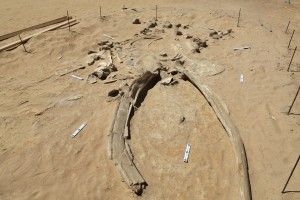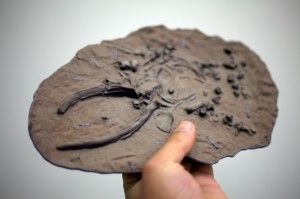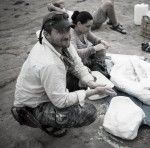From Pyenson Lab: When Is a Museum Specimen the Real Deal?
Can you tell the difference between a replica and the real thing? Does it matter? A curator at Natural History talks about copies, 3-D printing and museums
/https://tf-cmsv2-smithsonianmag-media.s3.amazonaws.com/filer/20130227104043Copies_Thumb.jpg)
![]() Is that real? It’s one of the most frequent questions I hear when I guide visitors through our museum, and admittedly, I stumble. Yes, sometimes it is the real thing, in rock, bone, fur or flesh. But often what you see on display is a replica of an actual specimen, or an amalgam of real bits along with creative layers of plaster and paint—embellishments from a less discerning era in museum curation. Even today, we unfortunately don’t identify these distinctions clearly to visitors, in favor of “making it look good.”
Is that real? It’s one of the most frequent questions I hear when I guide visitors through our museum, and admittedly, I stumble. Yes, sometimes it is the real thing, in rock, bone, fur or flesh. But often what you see on display is a replica of an actual specimen, or an amalgam of real bits along with creative layers of plaster and paint—embellishments from a less discerning era in museum curation. Even today, we unfortunately don’t identify these distinctions clearly to visitors, in favor of “making it look good.”
So, what’s the difference between a replica and the real thing? The answer seems pretty straightforward if you deal with one-of-a-kind specimens, like at a museum: there’s an original object; and then there are facsimiles—copies—made from silicone or latex molds or, these days, 3D prints from digital scans (see video, above). Sometimes copies are made for exhibit, or for research exchanges. Or, if the original specimen is too fragile (or unwieldy), high precision replicas are preferred for measurements or side-by-side comparisons.

By making copies, museums function in the same way as a library. Though this analogy falls apart if you consider the increasing rate that books are being sold and process digitally. What happens when an entire book—its cover, binding, marginalia and type—gets digitized and made searchable? What’s a physical book then, other than a doorstop? While the searchable digitized book can be a useful tool, happily, the real thing still does matter: to researchers following the historical trail of a book’s age, owner or reader; or just as a work of art. Ask an antiquarian book seller. As a consequence, there’s a need for places like libraries or the Smithsonian, to archive and protect the real deal.

Lately, making digital copies of museum specimens has become a process far more sophisticated than taking high-resolution photographs. And like digital books, these replicas become extremely useful tools. Bits and bytes are more easily accessible to researchers than specimens looked away in isolated museums. Here at the Natural History Museum, we can supplement traditional 2D methods with CT scanning, 3D surface scans, and we can archive bits of molecular code. We’re in the first stages of building digital avatars of specimens: the digital versions of their DNA, voices, surfaces and innards. And we can even bring the technology into the field, which opens new doors into saving, studying and archiving one-time collecting events.
So keep your eyes peeled. The next time you see something from the Smithsonian, it might be better than the real thing.

Nicholas Pyenson is a curator of fossil marine mammals at the Natural History Museum and records his fieldwork and other activities at Pyenson Lab. He studies the paleobiology of marine mammals with an interest in evolutionary comparisons. This is his first in a series of posts that he will be contributing to Around the Mall.